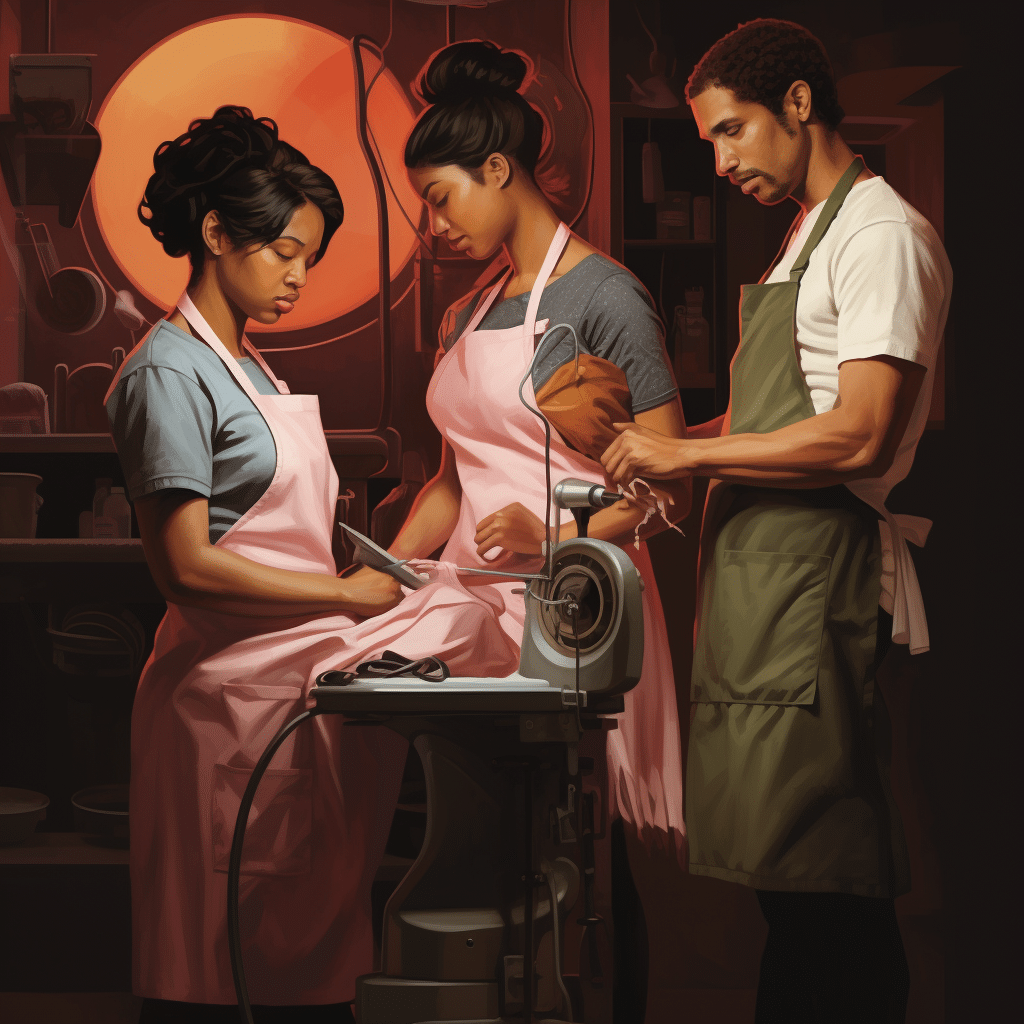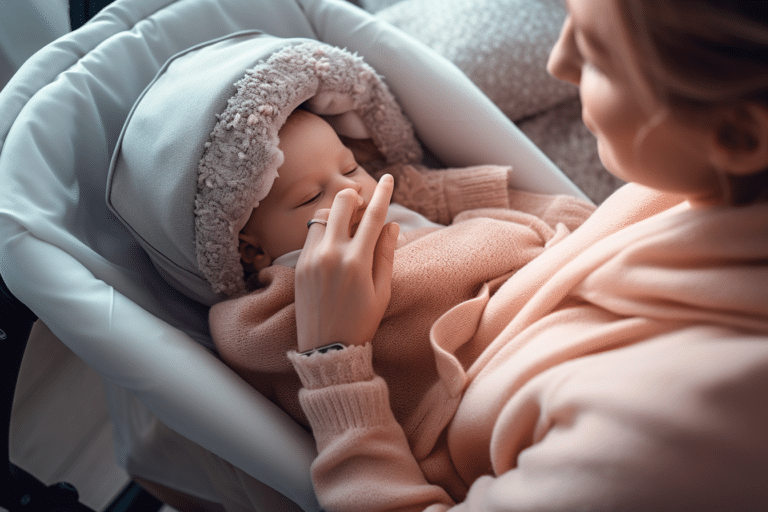The Journey of Stages of Labor: From Anticipation to Joy
Stages of Laboris a breathtaking experience that ushers in a new life. It’s a road of anticipation, thrill, and sometimes a little fear. The different stages of labor track the progress to the final product – childbirth.
The 1st stage kicks off with contractions. These intensify and come closer together. This part is divided into 3 phases: early labor, active labor, and transition. Early labor is mild contractions and the cervix slightly opening. During active labor, contractions get stronger and closer. Transition – the last phase – is the most extreme with contractions at their strongest and the cervix fully dilated.
The 2nd stage is when the baby arrives. You’ll feel strong pushes as your baby moves down the birth canal. Though hard work, the result is worth it – your bundle of joy!
Lastly, 3rd-stage labor is when the placenta is delivered. Though brief, it’s important for ensuring all fetal tissues have left your body.
Crazy Rewritten
Labor is an amazing transformation bringing a new life into the world. Anticipation, excitement, maybe a little anxiety? The stages of labor show the progress towards the big day.
Stage 1: Contractions start, getting stronger and nearer together. Three phases: early labor with mild contractions, cervix opening. Active labor, contractions get stronger/closer. Transition, peak intensity, cervix wide open.
Stage 2: Baby’s here! Strong pushes as baby goes down the birth canal. It’s hard work, but so worth it – your little bundle of joy!
Stage 3: Quickly, the placenta is delivered. Short but essential – ensuring all fetal tissues are gone.
Stage 1: Early labor

Recognizing the signs of early labor is key. These can include mild contractions, lower backache, or pressure in the pelvic area. Remain calm and relaxed by taking deep breaths and getting into a comfortable position. Hydrate and eat small, nutritious snacks to provide energy. Move around and change positions often to help manage pain. Communicate with healthcare providers about any changes or concerns. Have emotional support from a partner or loved one for reassurance and a calming atmosphere.
Details during early labor may include: bloody show (pinkish discharge), regular and intense contractions, increased pressure in the pelvis. To manage these, practice relaxation techniques such as deep breathing and visualization. This will reduce anxiety and make the experience more comfortable.
Follow these suggestions to make the early labor stage smoother: stay calm, hydrate, eat, move, communicate, have emotional support, and relax.
Stage 2: Active labor
Active labor is an intense phase of childbirth when contractions become stronger and frequent. Here’s a step-by-step guide:
- Contractions get intense. They become longer, more frequent, and more painful. Also, the cervix dilates for the baby’s head to move down.
- You may have an urge to push. When the cervix is fully dilated (10 cm), you will feel an urge to help the baby come out.
- Pushing efforts. With each contraction, you will be asked to push. It takes physical exertion and concentration.
- Baby’s descent. Your healthcare provider will monitor the baby’s progress. They will guide you about when and how to push.
- Crowning. When the baby’s head is visible or felt by the provider, it’s called crowning. It needs care and support from both you and the provider.
- Placenta delivery. After the baby is born, the placenta needs to be expelled. Your healthcare provider will assist.
It’s important to remember that every labor experience is unique. A supportive healthcare team is essential to manage active labor. In some cases, fetal distress before full dilation may require a cesarean section delivery. Consult your healthcare provider to decide what’s best.
Also, first-time mothers tend to have longer labors compared to those who have given birth before.
Stage 3: Transition
Stage 3: Transition
Contractions become intense here & last 60-90 seconds, with only a few minutes rest in between. The cervix fully dilates, allowing the baby’s head to lower into the birth canal. Medical pros must monitor vital signs (e.g. blood pressure, heart rate, oxygen levels) for both mother & baby. Signs of distress or complications need immediate attention. Mothers may feel overwhelmed or exhausted due to intense contractions. Relaxation is key – a calm, supportive environment can help!
Stage 4: Delivery of the baby

The doctor will lead the mother to push, with each contraction exerting pressure on the baby’s head. They may also use their hands to guide and support the head as the baby descends through the birth canal. Checking for any umbilical cord entanglement, the doctor will quickly untangle it if needed. Then with one final push from the mom, the rest of the baby’s body will be born. The doctor will clear out any mucus or fluids from the baby’s nose and mouth, so they can breathe properly. Parents are often filled with joy and emotion when they witness their newborn for the first time.
Every delivery is unique. The intensity and duration of this stage varies for each woman. Rely on your healthcare provider to help you through your journey.
Live a special moment like no other. Don’t miss seeing your miracle come into the world. With all your heart, enjoy this amazing bond only achieved through a parent’s unconditional love.
Conclusion and post-labor care
After labor, Stages of labor key to look after the mother and baby. This involves providing a safe and pleasant atmosphere, emotional support, and keeping an eye out for any issues. Each woman’s recovery is unique, so tailor care accordingly. Rest, nourishment, and light exercise are important for healing and regaining energy. Regular check-ups and follow-up visits with healthcare providers are also essential for monitoring both mother and baby’s health.
Emotional support is also essential in post-labor care. The birthing process can be emotionally taxing, so create a nurturing environment where mothers can talk without being judged. Open communication, ample bonding time, and help with breastfeeding or other issues can make postpartum recovery easier.
Some women may struggle with emotional changes or postpartum depression. In these cases, professional help should be immediately sought. According to Harvard Medical School, proper post-labor care reduces the risk of complications and helps mom and baby recover faster.
These tips will help with the shift from Stages of labor to early parenthood. By taking care of physical and emotional needs, and getting help if needed, mothers can start their new journey feeling supported.
Frequently Asked Questions
1. What is the first stage of labor?
The first stage of labor is the longest stage and is divided into three phases: early labor, active labor, and transition. Early labor involves the cervix thinning and dilating up to 3-4 centimeters. Active labor is when contractions become stronger and more frequent, causing the cervix to dilate up to 7 centimeters. Transition is the final phase, characterized by intense contractions and the cervix fully dilating to 10 centimeters.
2. What happens during the second stage of labor?
The second stage of labor begins when the cervix is fully dilated and ends with the birth of the baby. During this stage, the mother experiences strong urges to push as the baby moves through the birth canal. The doctor or midwife guides the mother to push effectively, and the baby’s head emerges followed by the rest of the body.
3. What occurs during the third stage of labor?
The third stage of labor refers to the delivery of the placenta. After the baby is born, the mother continues to have mild contractions to help detach the placenta from the uterine wall. The healthcare provider then assists in delivering the placenta, ensuring that it is completely removed to avoid complications.
4. What are the signs of entering the fourth stage of labor?
The fourth stage of labor is the immediate postpartum period, typically lasting for about two hours after the delivery of the placenta. Signs of entering this stage include the reduction of uterine size, stabilization of vital signs, and the initiation of breastfeeding. The healthcare team closely monitors the mother and addresses any discomfort or concerns.
5. Is it normal to experience pain during labor?
Yes, Stages of labor is normal to experience pain during labor. However, pain management strategies such as breathing techniques, relaxation exercises, hydrotherapy, and medication options (like epidurals or analgesics) can be used to help manage and relieve discomfort during labor.
6. What complications can occur during the stages of labor?
Complications during labor can include prolonged labor, failure to progress, fetal distress, umbilical cord prolapse, placental abruption, or excessive bleeding. It is important to have a healthcare provider present during labor to monitor and manage any potential complications.






